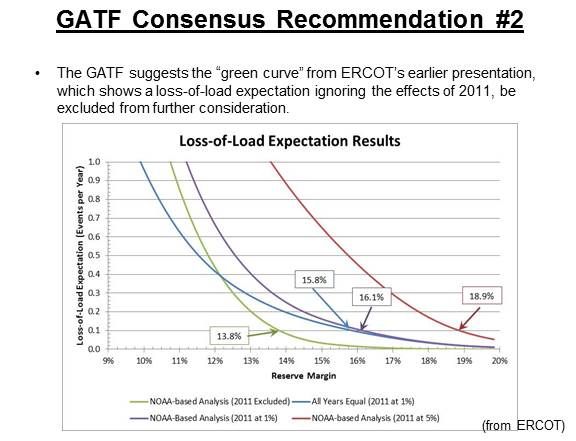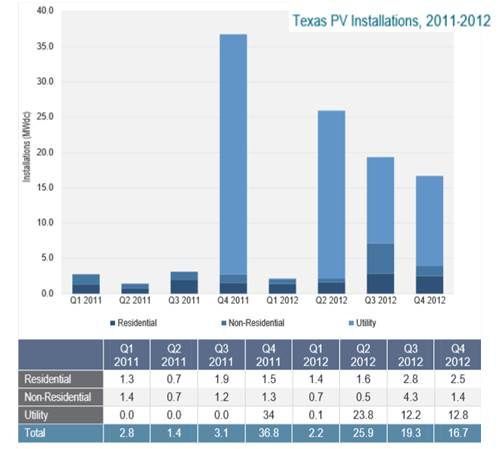Texas regulators took an important step toward carving out a bigger role for renewables -- with a revision to the capacity values assigned to wind and solar.
The Generation Adequacy Task Force (GATF) at the Electric Reliability Council of Texas (ERCOT) looked at how these resources have performed, how much they are available, and how they have changed the capacity values, explained SunEdison Director of Government Affairs Maura Yates.
Solar will have a 100 percent capacity value for up to 200 megawatts of installed capacity. After that, the capacity value depends on how much solar is available at least 50 percent of the time. “That should be a 70 percent to 80 percent capacity value,” Yates said.
Non-coastal Texas wind will get a capacity value of 14.2 percent and coastal wind will be at 32.9 percent.
A resource's percent capacity factor is a measure of its energy performance. It is calculated by comparing the amount of actual production to the nameplate production capacity over the 8,760 hours in a year.
“Capacity value is different. It is how much the resource is available at system peak to maintain system reliability,” Yates explained. "Solar has a high capacity value because solar peak production and system peak demand, which for ERCOT is the twenty highest load hours in the year, are often similar."
The reason this is important is that ERCOT’s Board of Directors did not approve the proposed increase in its reserve margin from 13.75 percent to 16.1 percent and they are waiting for further guidance from the Public Utility Commission of Texas (PUCT), Yates said. “But the increased capacity values move solar and wind further into ERCOT’s resource planning. They will get the credit they deserve now and that essentially equates to a 16.1 percent reserve margin.”
ERCOT is debating a change from 13.75 percent to 16.1 percent in its reserve margin target and whether to make that a mandate, Yates said. And the PUCT is debating whether to change the Resource Adequacy mandate or the reserve margin.

“There has also been a lot of the dialogue on a broader market restructuring,” Yates added. “Many believe, and it is SunEdison’s position, that it is most efficiently done through a forward-capacity market. With an energy-only market, developers and investors don’t have enough forward insight to make the investments. It is still too risky.”
With a capacity market, she said, developers and investors can know the market requires grid operators to buy resources with high capacity values. But, Yates noted, ERCOT has a lot of considerations and SunEdison remains heavily invested in Texas.
As of May 2013, ERCOT had 75 megawatts of solar on-line, and 60 of those megawatts were developed by SunEdison. Of the 65 megawatts scheduled to be added, 15 MW are being developed by SunEdison and OCI Solar Power is building a 50-megawatt project. Both developers have hundreds of megawatts in planning stages.
“The thing that most allows us to engage in this market and compete is the continued cost decline of solar,” Yates said. “And solar still has other resource characteristics needed and valued by the market, like proximity to load and avoiding line losses. If nothing were to change in the market, solar would remain competitive. And prices continue to come down.”
All the proposed policy changes -- ERCOT’s mandated increase in the reserve margin, increases in renewables in the PUCT’s Resource Adequacy planning, a capacity market, and others -- remain on the table, Yates said. There will likely be some guidance from the Commission by next spring.
“This summer’s heat intensity and how the grid responds will color the Resource Adequacy discussions,” she said. “And we’ll have an opportunity to test the newly approved market pricing mechanisms.”
The PUCT and ERCOT are more likely to move if the summer’s heat causes failures of electricity reliability and customers demand more renewables. “Nobody wants things to go wrong, but the upside of things going wrong is that people demand change,” Yates said.




